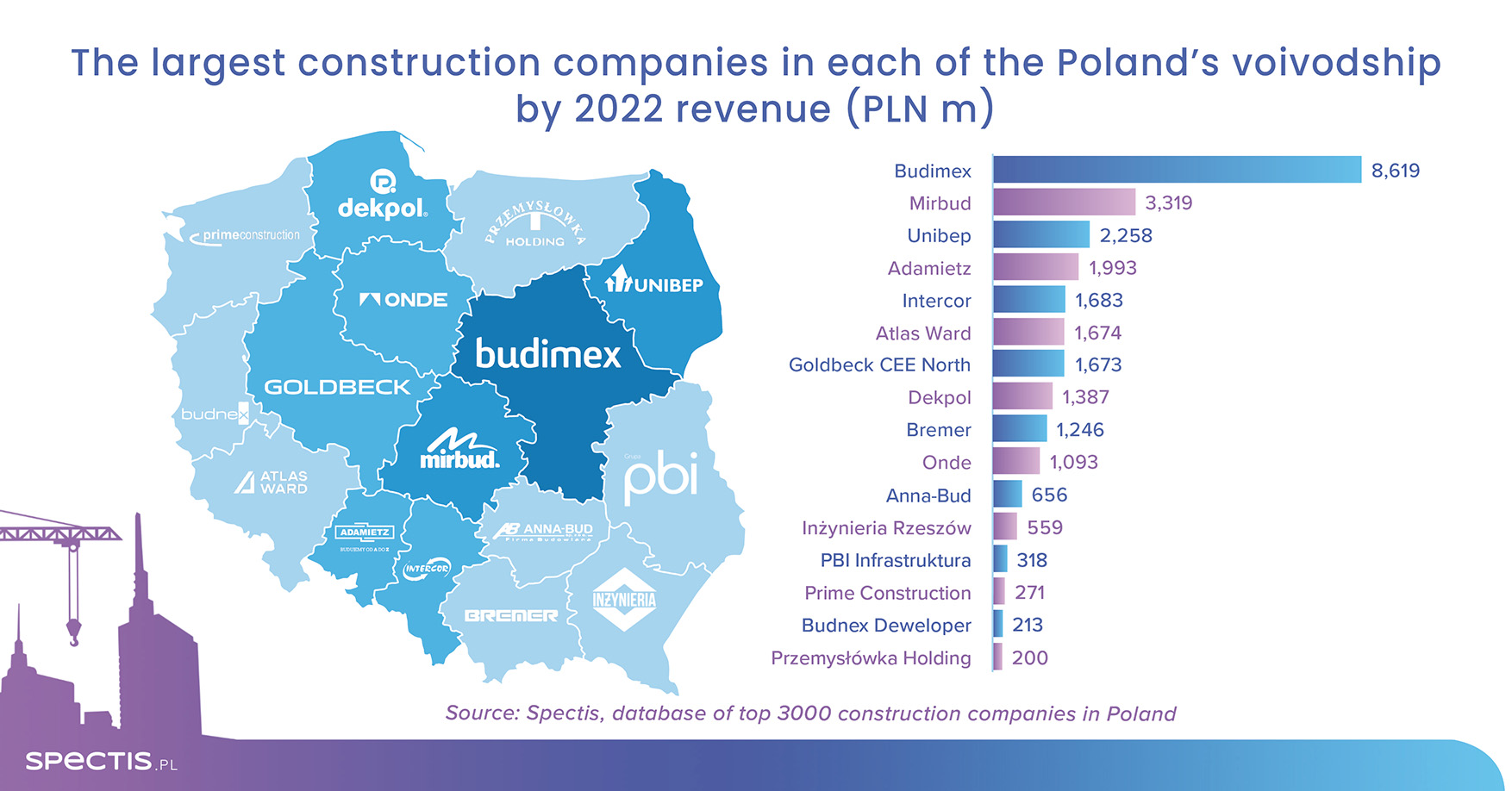Register of contractors operating in Poland
Top 3000 construction companies in Poland
The database of construction companies is the most important and invaluable tool supporting the analysis of the competitive environment in the contracting sector. The database is particularly useful when choosing or examining construction companies in terms of revenue, profitability, headcount, business specialisation or location. Covering 3,000 entities, the database is developed and updated using information from several independent sources and data obtained directly from companies we cooperate with.
Based on an analysis of revenue, a company needed to report sales revenue of PLN 10m to make it to the top 3000 list, whereas securing a spot in the top 1000 meant revenue of PLN 59m. Companies reporting sales revenue of over PLN 106m were able to successfully compete for a place in the top 500. The threshold of PLN 167m was sufficient to be among the top 300. If a company posted sales revenue of more than PLN 240m, it stood a chance of earning a top 200 ranking. To crack the top 100 construction companies, companies needed to report sales revenue of PLN 460. Quite many medium-sized companies find it difficult to exceed the PLN 100m revenue mark – we identified more than 535 such companies in our database.
What is the content of the database?
- Full company name
- Voivodship
- City
- Postal code
- Address
- Phone number
- Website
- REGON number
- NIP number
- KRS number
- Revenues (time-series data)
- Net financial result (time-series data)
- Construction sectors served
- Additional property development activity.
By what construction sectors can companies in the database be filtered?
- Residential construction
- Non-residential construction
- Road construction
- Railway construction
- Industrial and power construction
- Other civil engineering
- Residential property developer
- Non-residential property developer.

When you will find the database particularly useful?
- Looking for new contractors or subcontractors
- Analysis of contractors from a regional perspective
- Selecting the most prospective companies
- Identifying potential targets for acquisition
- Reviewing companies by business specialisation
- Expanding the customer base.
